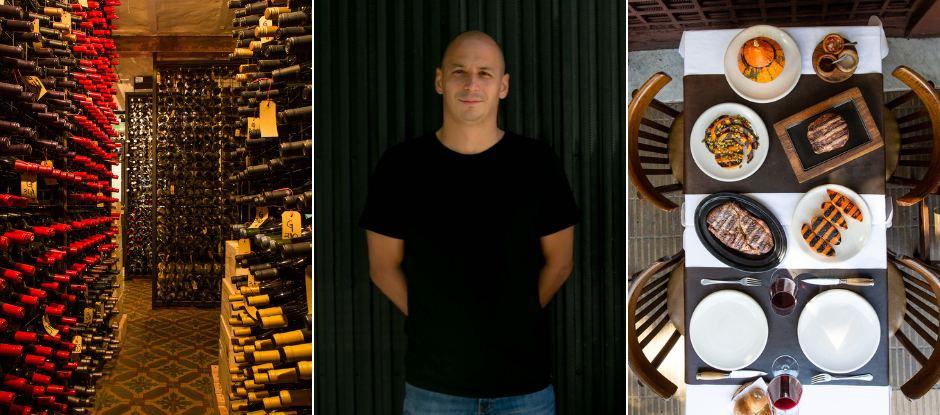The restaurateur behind legendary Buenos Aires grill restaurant Don Julio, Pablo Rivero was also recently voted as the Beronia Latin America’s Best Sommelier 2022. In this quick-fire guide, he shares everything you’ve always wanted to know about Argentinian wine and reveals his tips on where to buy and drink the best bottles in Buenos Aires
Why Argentinian wine?
Over the last 30 years, Argentina has gone from having a reputation for low-quality, bulk-produced wine to becoming the fifth largest producer in the world, with award-winning wines appreciated by connoisseurs all over the planet. As this revolution was unfolding, one of the first professional school for sommeliers in Argentina (Escuela Argentina de Vinos) opened in Buenos Aires in 2002 – and just four years later, Pablo Rivero was among its first generations of graduates.
The restaurateur, who had opened Don Julio – then a casual neighbourhood steakhouse – in 1999, immediately saw the potential of wine and took a keen interest in it. Over the last 15 years, Rivero has been tirelessly researching, tasting and selecting wines for Don Julio’s cellar, which now includes over 2,300 labels and 60,000 bottles of exclusively Argentinian wines. His incredible work has become synonymous with the restaurant itself and his expertise played a part in Don Julio being voted The Best Restaurant in Latin America 2020, sponsored by S.Pellegrino & Acqua Panna, and obtaining the No.2 position and the title of The Best Restaurant in Argentina in 2022.
Now established as one of the world’s top wine producers, with its best restaurant as famous internationally for its masterfully grilled steaks as for its unmatched selection of bottles, Argentina is a country with a lot still to discover for the vinous traveller – and who better to make the introductions than the Beronia Latin America’s Best Sommelier 2022?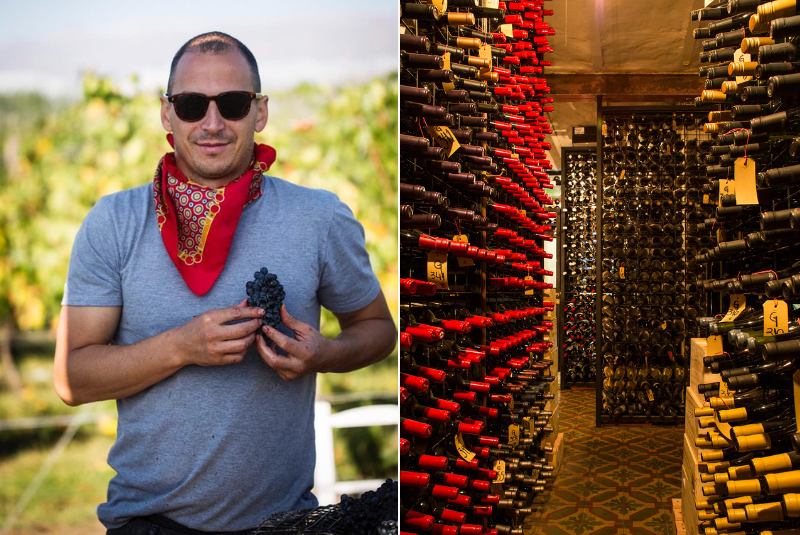
Pablo Rivero was named the inaugural Beronia Latin America's Best Sommelier in 2022
Regions and grapes
“Argentina has a great diversity of climates, regions and grapes, as the wine industry is developed from Patagonia to the north, and from the Andes to the Atlantic coast. We try to replicate this diversity in Don Julio's cellar,” begins Rivero.
To better analyse and convey the characteristics of each wine, in 2021 Rivero and his team developed their own ‘geoclimatic wine list’, in collaboration with local wine experts. It identifies seven wine-producing regions in the country, each with its own distinct terroir and climate, from north to south: the northern Andean valleys; the Cuyo Andean valleys; the ‘first zone’, located south of Mendoza city; the Uco Valley; Mendoza and its immediate surrounding area; Buenos Aires; northern Patagonia; and Chubut. This uniquely presented wine list, complete with beautiful maps of the country, is also part of the physical menu at Don Julio, helping diners understand the landscape that leads to the creation of each wine.
View this post on Instagram
While the northernmost region hosts wineries up to an altitude of 3,100 metres above sea level in the Andes, the southern areas feature vineyards growing on river terraces at sea level. The fertile area around Mendoza, which produces 75% of the country’s wines, ranges in altitude between 670 and 1,100 metres with loam soil (a combination of sand, silt and a smaller amount of clay) – a small taste of the incredible variety of terroirs in Argentina which is reflected in its diverse wine output.
“Undoubtedly, the most outstanding grape variety [in Argentina] is Malbec,” says Rivero – indeed, the country is the world’s top producer, with over 140 wineries working with this variety. “However, Cabernet Franc has also been showing an impressive quality for years. Classic varieties, such as Chardonnay and Cabernet Sauvignon, produce wines on a par with the world's best. And recently, great efforts have been made to enhance the value of historical varieties, such as Criollas, Moscatel and Torrontés,” the latter a white completely unique to the country.
Match the bottle to the person
When the times comes to pick a bottle for dinner, Rivero recommends stopping and reflecting before calling over the sommelier. “Think about what you want to drink: is it a fresh and aromatic white to go with offal? A light red for a cecina [dried and salted beef]? Or a full-bodied red with strong tannins and intensity of flavour for a fatty grilled meat?
“Then, let yourself be advised by the person who’s recommending the wine. A good sommelier should never want to sell the most expensive bottle or what they themselves would like to drink. Argentina offers wines of excellent quality in all price ranges. There are rich, well-made wines to drink every day; wines of greater complexity to accompany a great meal or to open for a special occasion; and beautiful wines that can be cellared and evolve for decades.
“A good sommelier has to know how to interpret what will be the best wine for the diner that night, according to their tastes, preferences and the price range where they feel comfortable.”
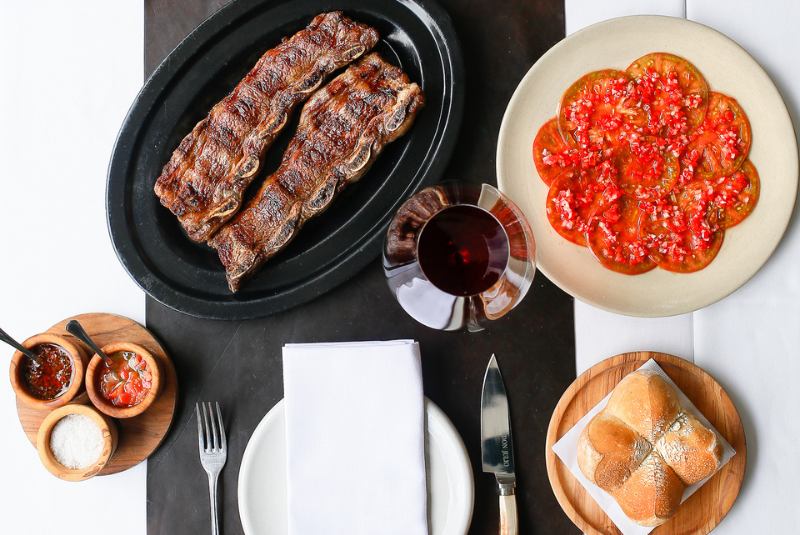
Dishes served at Don Julio: Roasted strip loin and criollo tomatoes
Perfect food pairings
Over the last five years or so, as Rivero accelerated the growth of Don Julio’s cellar, the team has also put a lot of effort into matching the menu – which includes not only house-made charcuterie and grilled meat from grass-fed Aberdeen Angus and Hereford cattle, but also cheese and local vegetables licked by the flames – with their best bottles.
“When it comes to pairings, we can bend the rules a bit and experiment with combinations that are not so ‘classic’, because when we find a combination that works, it really enhances the flavours of the dish and the wine,” says the award-winning sommelier. “For this reason, tasting notes should help the diner to get an idea of what kind of wine they are going to drink, they should never be confusing or overly poetic.”
Below are some key examples of pairings at Don Julio:
For cured meats, such as Don Julio’s house-made chorizo: “We like to recommend wines that have been organically aged, in the style of some wines from Jerez and the Jura. This is a type of wine that we seek to promote and we also support the producers who make it, even making wines of this style exclusively for Don Julio. Today, it could be a Super Uco Crianza Biológica, a Los Dragones Torrontés Flor, or Puerta del Abra Chardonnay Velo de Flor.”
For something more unique, like fried sweetbreads: “These go very well with aged whites, such as a Torrontés 1992 from Bodega Etchart, or a Semillón 1987 from Humberto Canale.”
For the pièce de résistance, the prime rib steak: “Here, we can choose one of Argentina’s great contemporary wines, such as a Noemia Malbec, or a Superuco Genitori Gualta 2019. Or alternatively, a great vintage wine like a Norton Malbec 1979, or a Montchenot Cosecha Especial 1960 from Bodegas López.”
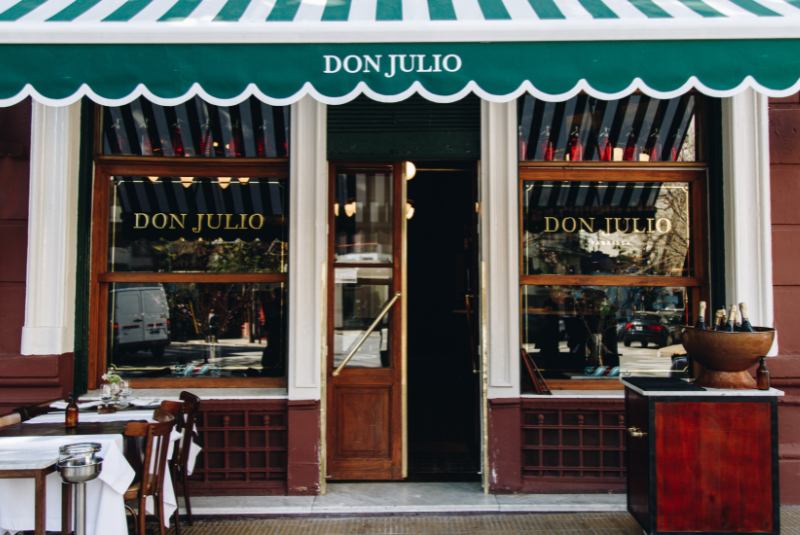
Pablo Rivero's steakhouse, Don Julio, ranked No.2 at Latin America's 50 Best Restaurants 2022 and was named The Best Restaurant in Argentina
Wineries to watch
Rivero recommends keeping an eye on the following Argentinian wine producers:
Pancho Bugallo with Cara Sur (Barreal, Calingasta Valley, San Juan), instagram.com/carasur.barreal: An avid mountaineer, Bugallo makes high-altitude, low-intervention artisan wines from heritage varietals in the Calingasta Valley, to the north-west of Mendoza.
Germán Masera with Escala Humana (Uco Valley, Mendoza), instagram.com/escalahumanawines: A leading figure in the new generation of Argentinian oenologists, Masera’s tiny family winery focuses on fresh, sustainable and light-bodied wines from forgotten varieties, such as Bequignol, a red grape originally from Bordeaux.
Manu Michelini with Michelini i Mufatto (Uco Valley, Mendoza; Bierzo, Spain; and Maldonado, Uruguay), michelinimufatto.com: Born into a wine-producing family, Michelini thoroughly studies history and heritage to create what he calls ‘vineyards with intention’, and shares Rivero’s obsession with landscape and terroir.
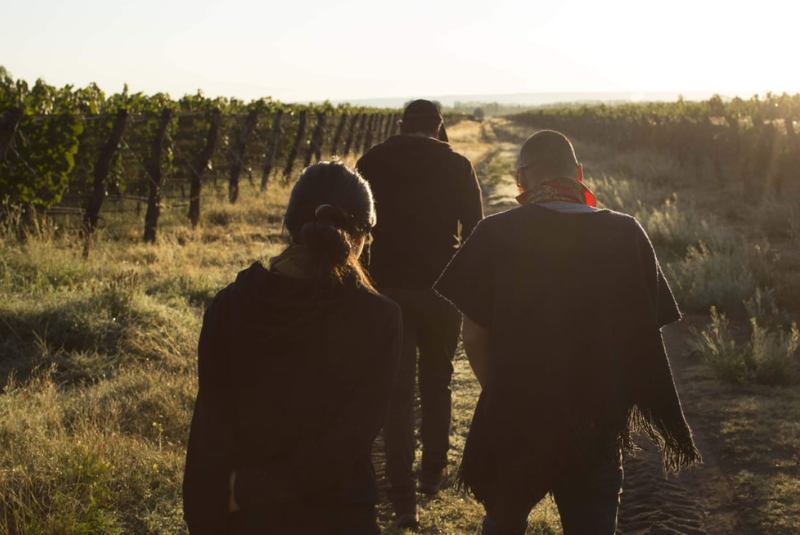
Rivero and his team in an Argentinian vineyard
Where to get a good glass in Buenos Aires
Rivero recommends a few outstanding wine shops in his hometown:
Lo de Joaquín Alberdi (Jorge Luis Borges 1772, C1414 Buenos Aires), lodejoaquinalberdi.com: A wine shop, bar and tastings hotspot rolled into one, this has become an institution in Buenos Aires – so much so that his eponymous founder is jokingly nicknamed ‘the patron saint of Argentinian wine’.
Ozono Drinks (La Rioja 1823, C1244 Buenos Aires), ozonodrinks.com.ar: This expansive wine shop, which also hosts tastings, is famous for stocking some of the country’s best award-winning wines.
Bebé Vino (Galería Patio del Liceo, Av. Santa Fe 2729, C1425 Buenos Aires), instagram.com/bebevino.bebe: This upcoming wine bar and shop prides itself on not only selling bottles, but also making culture by drawing the links among terroir, producers and the final bottles for a more complete tasting experience.
The list of Latin America’s 50 Best Restaurants 2022, sponsored by S.Pellegrino & Acqua Panna, was announced on Tuesday 15th November. Follow us on Instagram, like us on Facebook, find us on Twitter, tag #LatAm50Best and subscribe to our YouTube channel for the latest news.
